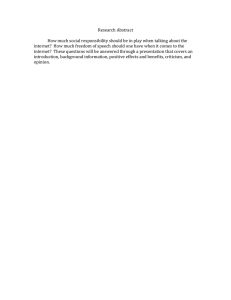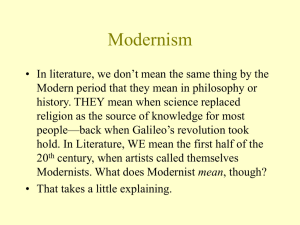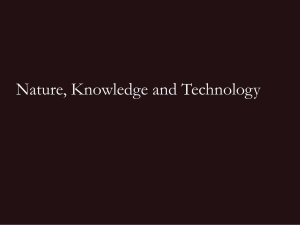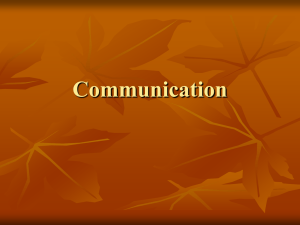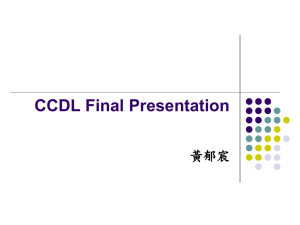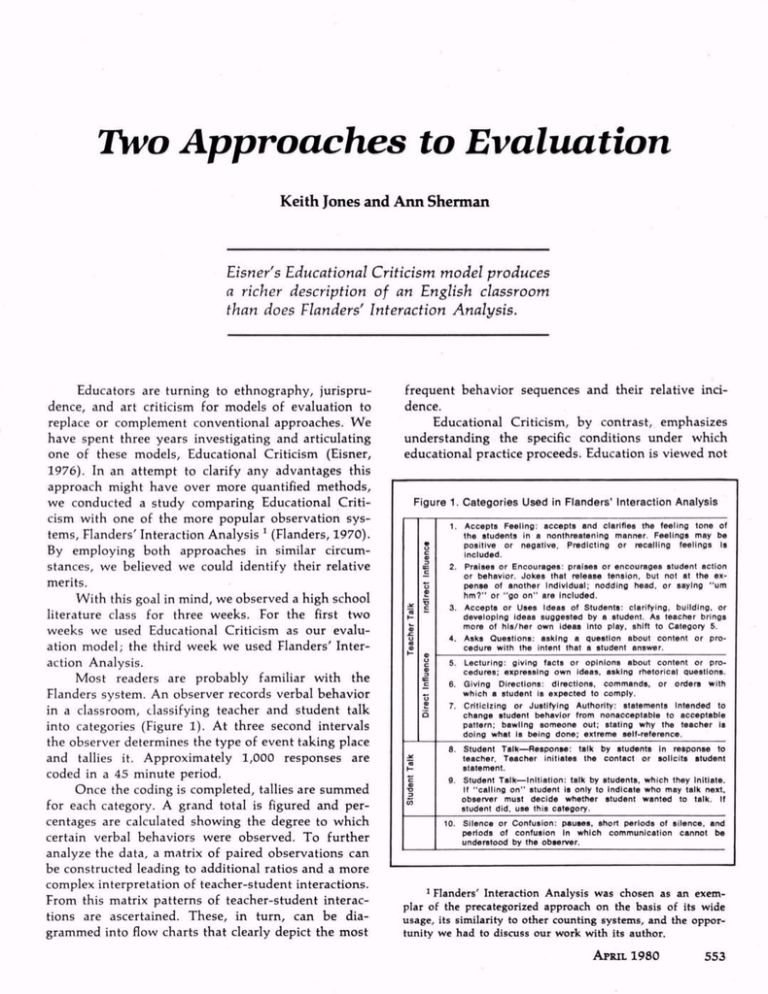
Two Approaches to Evaluation
Keith Jones and Ann Sherman
Eisner's Educational Criticism model produces
a richer description of an English classroom
than does Flanders' Interaction Analysis.
Educators are turning to ethnography, jurispru
dence, and art criticism for models of evaluation to
replace or complement conventional approaches. We
have spent three years investigating and articulating
one of these models, Educational Criticism (Eisner,
1976). In an attempt to clarify any advantages this
approach might have over more quantified methods,
we conducted a study comparing Educational Criti
cism with one of the more popular observation sys
tems. Flanders' Interaction Analysis ' (Flanders, 1970).
By employing both approaches in similar circum
stances, we believed we could identify their relative
merits.
With this goal in mind, we observed a high school
literature class for three weeks. For the first two
weeks we used Educational Criticism as our evalu
ation model; the third week we used Flanders' Inter
action Analysis.
Most readers are probably familiar with the
Flanders system. An observer records verbal behavior
in a classroom, classifying teacher and student talk
into categories (Figure 1). At three second intervals
the observer determines the type of event taking place
and tallies it. Approximately 1,000 responses are
coded in a 45 minute period.
Once the coding is completed, tallies are summed
for each category. A grand total is figured and per
centages are calculated showing the degree to which
certain verbal behaviors were observed. To further
analyze the data, a matrix of paired observations can
be constructed leading to additional ratios and a more
complex interpretation of teacher-student interactions.
From this matrix patterns of teacher-student interac
tions are ascertained. These, in turn, can be dia
grammed into flow charts that clearly depict the most
frequent behavior sequences and their relative inci
dence.
Educational Criticism, by contrast, emphasizes
understanding the specific conditions under which
educational practice proceeds. Education is viewed not
Figure 1. Categories Used in Flanders' Interaction Analysis
Accepts Feeling: accepts and clarifies the feeling tone of
the students in a nonthreatening manner. Feelings may be
positive or negative. Predicting or recalling feelings Is
included.
2. Praises or Encourages: praises or encourages student action
or behavior. Jokes that release tension, but not at the ex
pense of another individual; nodding head, or saying "urn
hm?" or "go on" are included.
3. Accepts or Uses Ideas of Students: clarifying, building, or
developing ideas suggested by a student. As teacher brings
more of his/her own ideas Into play, shift to Category 5.
4. Asks Questions: asking a question about content or pro
cedure with the intent that a student answer.
1.
S
^
_c
Z
1
ffl
t—
JC
9
U
|
c
£
5
"5
f—
s
CO
Lecturing: giving facts or opinions about content or pro
cedures; expressing own ideas, asking rhetorical questions.
G iving Directions: directions, commands, or orders with
which a student is expected to comply.
7. Criticizing or Justifying Authority: statements Intended to
change student behavior from nonacceptable to acceptable
pattern; bawling someone out; stating why the teacher Is
doing what Is being done; extreme self-reference.
5.
G.
Student Talk—Response: talk by students in response to
teacher. Teacher initiates the contact or solicits student
statement.
9. Student Talk— Initiation: talk by students, which they initiate.
If "catling on" student is only to Indicate who may talk next,
observer must decide whether student wanted to talk. If
student did, use this category.
8.
10.
Silence or Confusion: pauses, short periods of silence, and
periods of confusion In which communication cannot be
understood by the observer.
1 Flanders' Interaction Analysis was chosen as an exem
plar of the precategorized approach on the basis of its wide
usage, its similarity to other counting systems, and the oppor
tunity we had to discuss our work with its author.
APRIL 1980
553
as a nomothetic activity (law abiding and predictable)
but as ideographic (guided by the unique characteris
tics of the situation) (Eisner, 1976, p. 136). Because
the emphasis is on context, predefined instruments
are not used. Instead, the observer immerses herself/
himself in the culture of the classroom before choos
ing the most significant aspects on which to base an
evaluation. For this reason the observer must be a
seasoned educator. Instead of relying on a precategorized instrument to focus his/her attention, he/she
relies on perceptive skills sharpened by knowledge
and experience.
After an extensive observation period (several
days to several weeks) an Educational Criticism is
written having three aspects: description, interpreta
tion, and evaluation. The descriptive aspect provides
a vivid rendering of the qualities of the classroom life.
It is ordinarily a narrative that allows the reader an
opportunity to experience vicariously what the critic
has experienced. The intent is to have the reader
know, in a very real sense, what it is like to be in that
classroom. Figurative prose may be employed to help
the reader empathically understand the critic's per
ceptions.
The interpretative aspect of an Educational Criti
cism provides a theoretical analysis of what has been
described. Drawing from theory and research, the
educational critic analyzes and explicates what has
been portrayed.
The evaluative aspect of an Educational Criti
cism appraises or places educational value on what
has been perceived. Here the critic reaches conclu
sions. He/she judges the program and offers the
reader an intelligent opinion as to its educational sig
nificance.
Results Using Interaction Analysis
Because there was a high degree of correlation
in the interaction data collected by both authors, a
Flanders' Interaction Analysis was performed on only
one of our two codings. The day-by-day analysis may
be summarized as shown.
Figure 2. Patterns of Interaction on Two Different Days
Tuesday
Lesson: Literature Quiz
Wednesday
Lesson: Discussion of Vocabulary
Each of the five days had different frequencies
of teacher talk, student talk, and silence or confusion.
As might be expected, on those days when the ma
jority of the period was devoted to class discussion,
the most teacher and student talk was found. On those
days when there were quizzes the most silence and
confusion was found. In addition, on discussion days
the sustained teacher talk was greater than on the
quiz days when interchanges were shorter. Typical of
the verbal interaction patterns are the relationships
seen in the diagrams in Figure 2.2
When the direction of the interchange is com
bined with the percentages of each category, sum
mary statements such as on the next page may be
made:
2 These summary diagrams were constructed with the aid
and advice of Ned Flanders.
Writing for Educational Leadership
>out any aspect
n, or leadership
written in direct,
I possible (eight to
t
554
EDUCATIONAL LEADERSHIP
We reserve rtir-
footnotes and references/ follow
of Kate 1. Turabian, A Manual
versity of Chicago Press), or
Double-space everything, including*
,,.--.'
footnotes.
Please send two copies. Rejected
ire not returned unless the au*u -stamped, self-addressed envelope
On Tuesday, a major portion of the period was spent
in either silence or confusion. This was occasionally inter
rupted by teacher directions, teacher lecturing, teacher
questions, and student initiation. Questions coming from
students (student initiation) were most often followed by
teacher directions which, in turn, brought about either
silence or confusion. There were few, if any, questions
when the teacher lectured.
On Wednesday, teacher lecturing accounted for al
most one half of the period. Silence or confusion, student
response, and teacher questions followed consecutively in
frequency of occurrence. Most teacher questions followed
teacher lecturing which was then followed by student
response. However, there was a good deal of student
response (talk by students in response to the teacher)
that did not follow teacher questioning but rather teacher
lecturing.
Another way of looking at the data is to com
pare the weekly average frequencies with averages
obtained in other high school classrooms (Figure 3).
Within this classroom there appears to be a compara
tively low amount of teacher praise, teacher question
ing, and teacher use of student ideas while at the
same time there is a high degree of giving directions
and silence or confusion.3 The high degree of silence
or confusion and the apparent need to give a consid
erable number of directions suggest that the students
are not paying close attention to the instructor. An
other interpretation would be that the high degree of
silence or confusion may be related to the small
amount of praise and the infrequent use of student
ideas.
Figure 3. Daily Average Percent of Time in Each Category
Compared With National Averages*
Category
1.
2
3.
4.
5.
6.
7.
8.
9.
10.
Accepts feelings
Praises
Uses ideas of students
Asks questions
Lecturing
Giving directions
Criticizing
Student response I comblned
Student Initiation 1
Silence or contusion
Observed
Classroom
National
Averages
0.0%
0.2%
1.0%
4.5%
22.5%
10.7%
3.0%
1%
5%
8%
14%
40-60%
4%
1%
14.2%
21%
43.6%
12%
* National averages were given to us by Ned Flanders.
Results Using Educational Criticism
After observing in the classroom for two weeks,
each author wrote an Educational Criticism. Each
piece was approximately 20 pages long and included
description, interpretation, and evaluation. Excerpts
from one of these are presented below. The headings
indicate the three types of analysis.
Title: "Mrs. G. vs. the Novices"
Description:
The ping-pong match starts with the bell. Mrs. G.,
the professional teacher with 12 years experience, takes
on the class of 34 novices. The setting is a typical high
school classroom with the U.S. flag in one corner, a
bulletin board to one side, and a dominating blackboard.
The lighting is good with natural illumination coming
from the east and west windows aided by ceiling fixtures.
The traditional dark green linoleum playing field has been
coordinated with pear-green walls. Everything is familiar
to both spectators and players ....
Interpretation:
Interspersed between plays are occasional interfer
ences of jokes and unrelated conversations, but as usual
Mrs. G. is able to gain control. She deftly coordinates
activities so the novices can put as much English on the
ball as they want and feel that they are winning. In
reality, however, she is in command ....
Evaluation:
What this means educationally is that learning can
take place horizontally as well as vertically (Elkind, 1974).
Students are able to accumulate knowledge (vertical learn
ing) and also relate it to knowledge they have already
acquired (horizontal learning). Elkind points out that in
most classrooms horizontal learning is neglected because
of the emphasis on vertical acceleration. This he regards
as educationally wasteful, for only when there is elabora
tion of what is learned does it have an impact on one's
memory ....
Here in Mrs. G.'s class students are not apt to forget
the vocabulary words they are served when such striking
horizontal associations are made as "pissed" with the
word "peeved," "Jesse James" with the word "nefarious,"
and "wearing loud Hawaiian shirts" with the word
"gauche." When students are able to improvise as they
learn, they find hangers on which to place their newly
acquired learnings, which leads to greater retention of
the material than if it were force fed ....
The Two Approaches Compared
In comparing the method and results of the
Flanders' Interaction Analysis with that of the Edu
cational Criticism, we believe there are three salient
issues: thick versus thin description; objectivity ver
sus subjectivity; and quantity versus quality.
Clifford Geertz (1973) introduces the distinction
between "thick" and "thin" descriptions in his book,
The Interpretation of Cultures. The notion is taken
from Gilbert Ryle, who distinguishes between descrip
tions of phenomena that provide rich interpretation
and those that provide meager interpretation:
Consider, he says, two boys rapidly contracting the
eyelids of their eyes. In one this is an involuntary twitch;
in the other, a conspiratorial signal to a friend. The two
movements are, as movements, identical; from an I-am-acamera "phenomenalistic" observation of them alone, one
could not tell which was twitch and which was wink, or
8 It should be noted that on two of the five days of obser
vation a portion of the hour long periods was devoted to
quizzes, which added to the composite average of silence or
confusion. Nevertheless, there was no day on which the per
centage of silence or confusion did not exceed the national
average.
APRIL 1980
555
indeed whether both or either was twitch or wink. Yet
the difference, however unphotographable, between a
twitch and a wink is vast; as anyone unfortunate enough
to have had the first taken for the second knows (p. 9).
A thin description would be that each of the
two boys was rapidly contracting his eyelids. A thick
description would be that the one boy had an invol
untary twitch due to a nervous disorder, while the
other boy attempted to signal his friend that a con
spiracy was in motion. Geertz holds that in order to
accurately describe movements one must decipher the
whole network of structured and unstructured com
munication patterns that give movements the status
of gestures. "Analysis, then, is sorting out the struc
tures of signification . . . and determining their social
import" (p. 9). Geertz's point is that "thick" descrip
tion involves understanding the cultural significance
of movements it involves interpretation. This is not
to imply that "thin" description does not also involve
interpretation; even to say that something is an "eye"
or is "rapidly contracting" involves selection and in
terpretation of the world. The difference is that
"thick" description involves interpretation of the par
ticular social significance of behavior.
In comparing the two types of evaluations we
found that our Flanders' Interaction Analysis was thin
while our Educational Criticisms were thick. Note
these examples:
A framework for
planning curricula
By John R. Verduin, Jr.
The author's goal is to provide a general
model for educators to use in effective cur
riculum building. The principles derived
here are broad enough to apply to any
$9.00
adult-learning program.
Also of interest...
Censors in the
Classroom
The Mind Benders
By Edward B. Jenkinson
Documenting the expanding role of parent
censors in the public schools, )enkinson
offers informed discussion of the issues at
hand and suggestions for effectively coun
tering the efforts of pressure groups.
$12.50
Jj SOUTHERN ILLINOIS UNIVERSITY PRESS
556
EDUCATIONAL LEADERSHIP
Silence or Confusion
16%
Student Initiation
5%
Educational Criticism
vs. Absently sucking on the frames
of her glasses and gazing out
the window, Mrs. G. wistfully
replies that it is "almost not
worth living if you're just go
ing to exist."
vs. The novices are whooping it
up, paying little attention to
their opponent who is busily
searching for a quiz.
vs. A large blond male, who play
fully swats at many of Mrs.
G.'s remarks, boldly finesses
by asking, "If someone walked
into a dinner party wearing a
loud Hawaiian shirt, would
that be gauche?"
We believe there is an advantage to thick de
scriptions in educational evaluation. By answering
such questions as "What is the context in which the
behaviors take place?" "What is the importance of a
particular action to the participants in a program?"
"How does a particular behavior relate to other be
haviors?" and "Why do the participants behave as
they do?", thick descriptions can disclose information
critical to the understanding of educational programs.
By dealing with the particulars of a classroom culture
and using these as examples to be interpreted and
appraised, Educational Criticism sheds light on sub
stantive concerns often difficult to observe and expli
cate.
Can Evaluation Be Objective?
Curriculum Building for
Adult Learning
^ P.O. Box 3697, Carbondale, Illinois 62901
Interaction Analysis
Teacher lecturing
35%
Some might argue that standardized procedures
ensure objectivity; that methods like Educational
Criticism are subjective because they express only
one individual's point of view. They might claim that
without pre-defined categories there is no way of con
trolling what the observer will attend to, so interpre
tation may be biased.
We maintain that every method of evaluation is
subjective in the sense of imposing a perspective
which biases. One biased view held by a number of
people is no more objective (in the sense of conveying
the entire meaning of a situation) than are a number
of different "biased" viewpoints. That is, all evalua
tion instruments influence what is seen as "objective"
reality. The Flanders' system is not neutral; it imposes
a very specific framework on "reality." It reflects cer
tain assumptions about what is educationally signifi
cant verbal behavior. In this sense it is as subjec
tive as Educational Criticism. Instead of having the
observer judge things according to his or her own
individual point of view, each observer adopts the
perspective of the system. This in no way assures a
Duplicating
Educators are authorized to reproduce a single article
from this publication without making a written request
provided that 1) duplication is for an educational pur
pose in a not-for-profit institution; 2) copies are made
available without charge beyond the cost of reproduction;
and 3) each copy includes full citation of the source. Per
mission to reproduce more than one article will be granted
under the same conditions to those who make a reason
able request in writing.
This authorization does not apply to materials, if any,
for which ASCD doesn't hold the copyright. Any such
materials are so identified.
more complete view of "objective" reality; it simply
assures that people will see the same slice.
Closely related to the issue of objectivity vs. sub
jectivity is the issue of quantity vs. quality. Educators
often place greater faith in numerical data than in
analyses that do not quantify their observations. In
deed, there are certain advantages to numerical data.
It allows interpretations to be made based on statisti
cal differences, ratios, and correlations. In Flanders'
Interaction Analysis, by becoming aware of how often
certain behaviors occur and comparing these to a
standard, one can make judgments as to the desira
bility of increasing or decreasing certain behaviors.
What is overlooked is that how often a behavior oc
curs may be less important than the way it occurs.
For example, corporal punishment occurring a small
percentage of the time may have a major impact on
the demeanor of teachers and students. Likewise, an
event that happens frequently, such as teacher lectur
ing, may have little impact on students.
In our own criticisms of Mrs. G.'s classroom, we
found it relevant to our evaluation that students felt
free to make playful word associations. It was not the
number of times that students made such associations
that was revealing, but rather the permissiveness that
allowed students to respond with unrestrained word
associations like "pissed" with the word "peeved"
and "the wearing of a loud Hawaiian shirt" with the
word "gauche."
In the final analysis, the most striking difference
between these two approaches to the description of
educational life is that one attends mainly to the inci
dence of behavior while the other attends to the social
meaning of action. Flanders' Interaction Analysis is
like a net cast over a teacher-student discourse. It per
mits calculation of frequencies of certain behaviors
and sequences of events. Using it one can determine
amounts of overt behavior and the order in which they
occur. Such an analysis may be useful when the par
ticular context and character of the events are unim
portant.
By contrast, Educational Criticism emphasizes
the unique social meaning of classroom events. It is
like a portrait of the life teachers and students spend
together, with vivid images and probing interpreta
tions. From it one can learn something of the char
acter of a classroom and the educational import of
what goes on there.
Quality and Meaning
For the past 25 years classroom research has con
cerned itself primarily with the quantification of be
havior. We believe the scope of attention should be
broadened to include the quality and meaning of
events shaping the lives of students. As LaPiere (1943)
cogently states, "Quantitative measurements are
quantitatively accurate; qualitative evaluations are al
ways subject to errors of human judgment. Yet it
would seem far more worthwhile to make a shrewd
guess regarding that which is essential than to accu
rately measure that which is likely to prove quite
irrelevant" (p. 237). *£
References
Elkind, David. Children and Adolescents: Interpretive
Essays on Jean Piaget. New York: Oxford University Press,
1974.
Eisner, Elliot. "Educational Connoisseurship and Educa
tional Criticism: Their Form and Functions in Educational
Evaluation." The Journal of Aesthetic Education 1 0 (1976).
Flanders, Ned. Analyzing Teaching Behavior. Menlo
Park, Calif.: Addison-Wesley, 1970.
Geertz, Clifford. The Interpretation of Cultures. New
York: Basic Books, 1973.
LaPiere, Richard. "Attitudes vs. Actions." Social forces
13 (March 1943): 237.
Levine, Murray. "Scientific Method and the Adversary
Model: Some Preliminary Thoughts." A merican Psychologist
29 (September 1974): 661-77.
Magoon, A. Jon. "Constructivist Approaches in Educa
tional Research." Review of Educational Research 47 (Fall
1977): 651-93.
Rist, R. C. "Ethnographic Techniques and the Urban
School." Urban Education 1 0 (1975): 86-108.
Keith Jones and Ann Sherman are doctoral candi
dates at Stanford University, Stanford, California.
APRIL 1980
557
Copyright © 1980 by the Association for Supervision and Curriculum
Development. All rights reserved.

